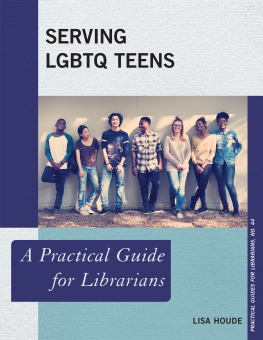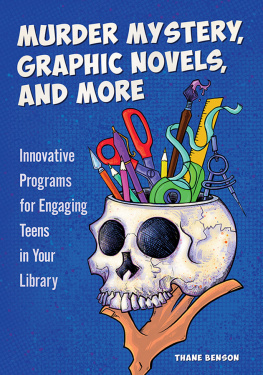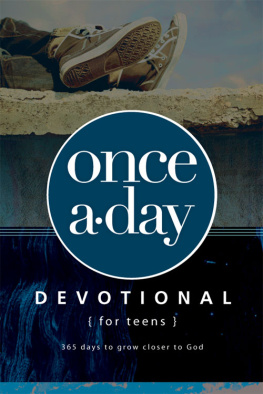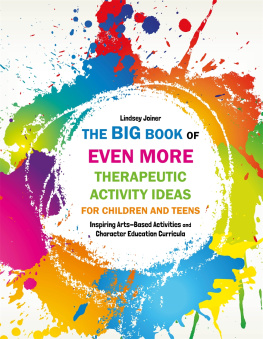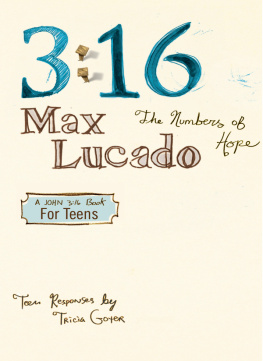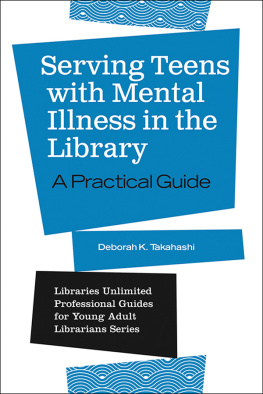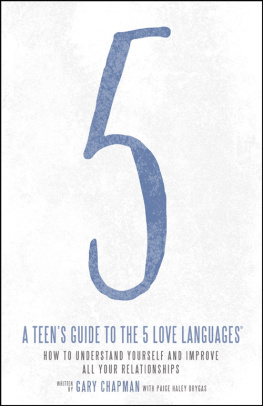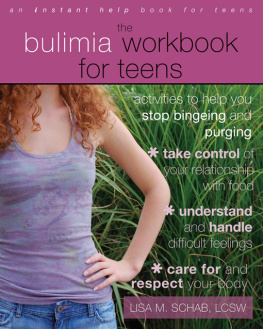Verse novels offer the weight of each word, the weight of the sentence, the weight of the line, the weight of white space, heightened attention to sound, and deep allegiance to silence.
Rita Dove
Novels in Verse for Teens
A Guidebook with Activities for Teachers and Librarians
Lisa Krok

Copyright 2020 Lisa Krok
All rights reserved. No part of this publication may be reproduced, stored in a retrieval system, or transmitted, in any form or by any means, electronic, mechanical, photocopying, recording, or otherwise, except for the inclusion of brief quotations in a review, without prior permission in writing from the publisher.
Library of Congress Cataloging-in-Publication Data
Names: Krok, Lisa, author.
Title: Novels in verse for teens : a guidebook with activities for teachers and librarians / Lisa Krok.
Description: Santa Barbara, California : Libraries Unlimited, [2020] | Includes bibliographical references and indexes.
Identifiers: LCCN 2019051210 (print) | LCCN 2019051211 (ebook) | ISBN 9781440874932 (paperback) | ISBN 9781440874949 (ebook)
Subjects: LCSH: TeenagersBooks and readingUnited States. | Novels in verseBibliography. | Novels in verseHistory and criticism. | Readers advisory servicesUnited States. | Young adults librariesActivity programsUnited States. | School librariesActivity programsUnited States. | Young adult literatureStudy and teaching (Middle school)United States. | Young adult literatureStudy and teaching (Secondary)United States. | LibrariesSpecial collectionsYoung adult literature. | Young adult fiction in librariesUnited States
Classification: LCC Z1037.A1 K76 2020 (print) | LCC Z1037.A1 (ebook) | DDC 808.83/99283071dc23
LC record available at https://lccn.loc.gov/2019051210
LC ebook record available at https://lccn.loc.gov/2019051211
ISBN: 978-1-4408-7493-2 (paperback)
978-1-4408-7494-9 (ebook)
24 23 22 21 20 1 2 3 4 5
This book is also available as an eBook.
Libraries Unlimited
An Imprint of ABC-CLIO, LLC
ABC-CLIO, LLC
147 Castilian Drive
Santa Barbara, California 93117
www.abc-clio.com
This book is printed on acid-free paper. 
Manufactured in the United States of America
For marginalized teens and reluctant readers everywhere
I see you.
Contents
PART ONE
Understanding and Using Novels in Verse
Getting Started: Why Use Novels in Verse?
Novels in Verse for Teens: A Guidebook with Activities for Teachers and Librarians includes not only details of verse novels that are available for use with teens, but also research-based information on how, why, and when to use them. A variety of book lists can be found online, but they give teachers and librarians only one piece of the puzzle. Readers advisories are provided to assist with pairing books with teens based upon their grade level, needs, interests, and specific situations.
After teens are paired with books, activities are provided to engage them further with the poetry. This in turn empowers them to compose individual creative writing pieces using multiple styles of verse, such as narrative, acrostic, concrete, free verse, found poetry, contrapuntal, haiku, cinquain, memoirs, spoken word poetry, and more.
White Space
Verse novels are continuing to grow in both readership and popularity, for many reasons. Their layout provides an alternative way for teens to view both books and poetry. The first thing that readers may notice is that the physicality of novels in verse is strikingly different from that of traditional prose novels. With substantially more white space, fewer words per page, and font that may vary in size, style, or format, the design certainly catches the readers eye. This is especially important for readers who may be intimidated by too many words on the page. Teens who previously were turned off by books an inch thick may find verse novels more manageable and comfortable to read. A huge benefit of this is that the readers will experience a boost in self-esteem and an increased willingness to read more.
Voice
The voice in a verse novel is generally not an external narrative, but is told as narration from the main or central character in a conversational tone. Shorter lines often take on a rhythmic effect. Mike Cadden (2011, 22) states that there is a focus on the rhythms of the characters spoken voice that does ask the reader to hear the speaker. As the voice of the narrator unfolds page by page, verse by verse, points of view are expressed colloquially, often addressing deep and intense topics. Because of the immediate and visceral nature of poetry, many authors utilize the genre when dealing with extremely emotional topics (Letcher 2010, 87). This, combined with the raw and gritty aspect of the voice, can engage teen readers from many walks of life. What verse novels do is invite imaginative speculation about the things that are left unsaid by either characters or absent narratorsthe descriptions of characters, settings, movements, and background information provided in the traditional prose novel that here are gaps, white or negative spaces, silences (Cadden 2011, 24). This is a beautiful amalgamation of the literal white space on the page as a silence to be filled by the imagination of the reader. Similar to a screenplay, the space on the page of a verse novel leaves visual elements to the mind of the reader, staging the descriptions, almost as if the reader is the director of a movie, bringing her or his own personal imagery to life.
Author Terry Farish has had many discussions with teens, librarians, and teachers who have asked her, Why verse? She encouraged them to come up with their own theories, which resulted in the following responses:
- The verses are like tweetsa short form that our brains are adapting to.
- The story is told in images, and its like youre seeing frames in a movie.
- The length of the lines of the verses shaped the strands of a braid.
- The lines made me read slowly.
- The lines made me race.
Farish (2013, 33) states that she loves it when readers do thistake the book and make it theirs. Find more from Farish in the Author/Title Index.
Diversity in Verse
Rudine Sims Bishops essay, Windows, Mirrors, and Sliding Glass Doors (1990, 9), is referred to frequently when addressing diversity in literature. She details the ways in which reading can be self-affirming:
Books are sometimes windows, offering views of worlds that may be real or imagined, familiar or strange. These windows are also sliding glass doors, and readers have only to walk through in imagination to become part of whatever world has been created or recreated by the author. When lighting conditions are just right, however, a window can also be a mirror. Literature transforms human experience and reflects it back to us, and in that reflection, we can see our own lives and experiences as part of the larger human experience. Reading, then, becomes a means of self-affirmation, and readers often seek their mirrors in books.
Another behemoth in the literary world is Walter Dean Myers. He has written several novels in verse, as well as an essay in The New York Times (2014) entitled, Where Are the People of Color in Childrens Books? He states that after reading James Baldwins story Sonnys Blues (1957), he was struck by the fact that it humanized people who were like him. Thousands of young people have come to me saying that they love my books for some reason or the other, but I strongly suspect that what they have found in my pages is the same thing I found in Sonnys Blues. They have been struck by the recognition of themselves in the story, a validation of their existence as human beings, an acknowledgment of their value by someone who understands who they are. It is the shock of recognition at its highest level (Myers 2014). Myers states that while working in a personnel office years ago, he saw racism within the hiring practices regarding equally qualified candidates. He continues, Books transmit values. They explore our common humanity. What is the message when some children are not represented in those books? Where are the future white personnel managers going to get their ideas of people of color? Where are the future white loan officers and future white politicians going to get their knowledge of people of color? Where are black children going to get a sense of who they are and what they can be?
Next page

